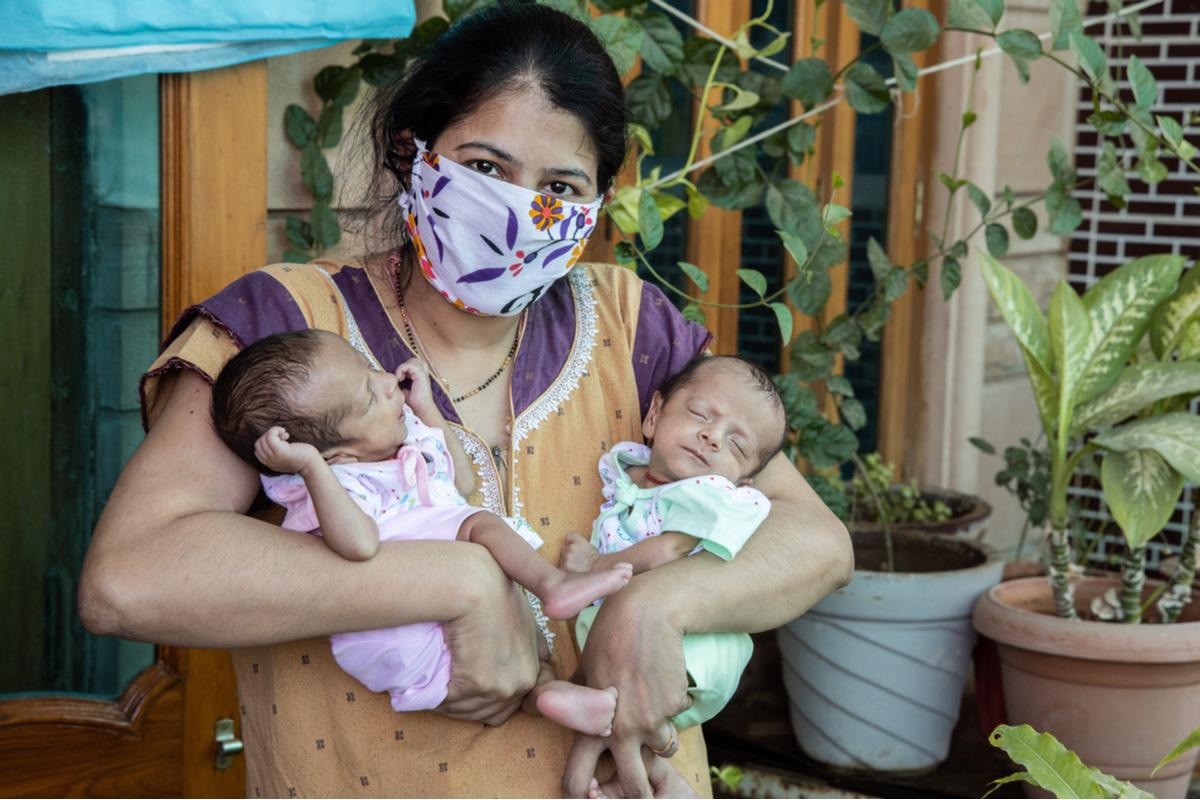 By Sam HancockReviewed by Danielle Ellis, B.Sc.Feb 2 2022
By Sam HancockReviewed by Danielle Ellis, B.Sc.Feb 2 2022The coronavirus disease 2019 (COVID-19) pandemic has had significant impacts on almost every healthcare system globally, with many professionals suffering from overwork, stress, and related mental health issues. While mass vaccination programs have reduced the strain, it is important to analyze the effects on different parts of the healthcare system. A researcher has been investigating the impact of the pandemic on neonatal health and pregnant women.
 Study: What is the impact of COVID-19 pandemic years on Deliveries and Home Based New Born Care in India?. Image Credit: stockpexel/Shutterstock
Study: What is the impact of COVID-19 pandemic years on Deliveries and Home Based New Born Care in India?. Image Credit: stockpexel/Shutterstock
A preprint version of the study is available on Research Square*, while the article undergoes peer review.

 *Important notice: Research Square publishes preliminary scientific reports that are not peer-reviewed and, therefore, should not be regarded as conclusive, guide clinical practice/health-related behavior, or treated as established information.
*Important notice: Research Square publishes preliminary scientific reports that are not peer-reviewed and, therefore, should not be regarded as conclusive, guide clinical practice/health-related behavior, or treated as established information.
The study
The researcher performed a retrospective cross-sectional comparative study among the women and newborns who received delivery or home-based newborn care (HBNC) in different ways across 36 territories in India, comparing the two years of the pandemic (2020 and 2021) with the two years before it emerged (2018 and 2019).
Data were extracted from the Indian governmental organizations' health management information system between January 2018 and May 2021. This included the number of home deliveries that were attended by a Skill Birth Attendant (SBA), including doctors, nurses and midwives, the number of home deliveries that were attended by non-SBAs, including trained birth attendants (TBAs) and relatives, the number of pregnant women given Misoprostol during home delivery, the number of newborns who received at least seven homecare visits, and data on institutional deliveries such as number of deliveries in total, number of women discharged within 48 hours, and number of newborns receiving home visits following delivery at a healthcare institution.
The scientist found that the average number of home deliveries attended by SBA across 2021, 2020, 2019, and 2018 were 15,491, 16429.25, 19006.58, and 21317.83, respectively – a decrease of ~27% between 2018 and 2021. For the numbers of home deliveries attended by Non-SBA a similar downward trend is observed, decreasing from 99830.25 in 2018 to 84592.58, 73351.66, and 66145 in years 2019, 2020, and 2021 respectively, a total decrease of 33.74% over the three years.
The results for the number of pregnant women was less telling, with a general decrease across the four years from 2018 to 2021 by 9.72% (6718.42 to 6065.8), a much smaller decrease than is seen in the previous factors. The mean number of newborns receiving seven HBNC visits decreased by only 6.47% across the four years (78221.67 to 73158.2). Institutional deliveries decreased by 8.34% over the four years (566933.5 to 497037.2), the number of those newborns that received 6 HBNC visits increased by 40.03%. The number of women discharged within 48 hours of delivery decreased by 12.32% (566933.5 to 497037.2).
However, the researcher did not consider the appearance of an ongoing trend downwards before the pandemic began, with significant decreases between 2018 and 2019 in deliveries attended by SBAs and Non-SBAs. There also does not appear to be any data on the number of births recorded in total, making it difficult to tell if the number of births has dropped in total – which could drastically affect the interpretation of these results. A lower number of recorded births would explain all of the results perfectly, and without this information, the conclusion is in doubt.
The lack of quoted statistical tests also reduces confidence in the results, as some effect sizes, such as those seen in the number of pregnant women given Misoprostol, the number of newborns receiving the appropriate amount of HBNC visits, and the number of Institutional Deliveries, are fairly small – which makes it difficult to tell if the effects are significant.
The only statistical analysis available is hidden in the tables section, which shows that the standard deviations for some of these years overlap by a wide margin. This is especially relevant for the Misoprostol results, which show an increase between 2019 and 2020, which is not accounted for in the analysis.
Some numbers should also clearly be given as a percentage of a whole, such as pregnant women discharged within 48 hours of birth – if births have decreased, this number would naturally decrease as well. Finally, the information for the year 2021 is only available from January to May – and it is not explained how this is adjusted for in the analysis, or even if it is adjusted for.
The conclusion
The research presented here is useful and should provide some insight into the impact of the pandemic on the Indian healthcare system, especially with regards to the effect on pregnancy, delivery, and newborn health check-ups. Still, it requires significantly more statistical analysis before any suitable conclusions can be derived.

 *Important notice: Research Square publishes preliminary scientific reports that are not peer-reviewed and, therefore, should not be regarded as conclusive, guide clinical practice/health-related behavior, or treated as established information.
*Important notice: Research Square publishes preliminary scientific reports that are not peer-reviewed and, therefore, should not be regarded as conclusive, guide clinical practice/health-related behavior, or treated as established information.